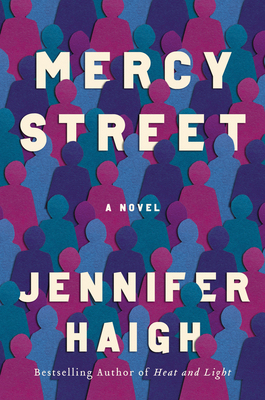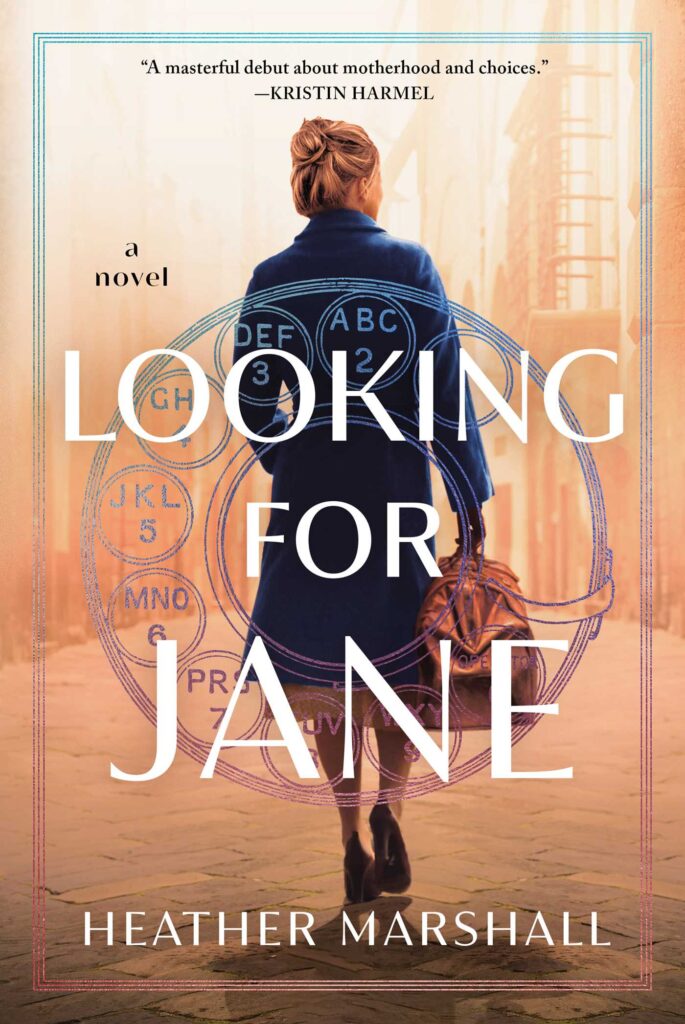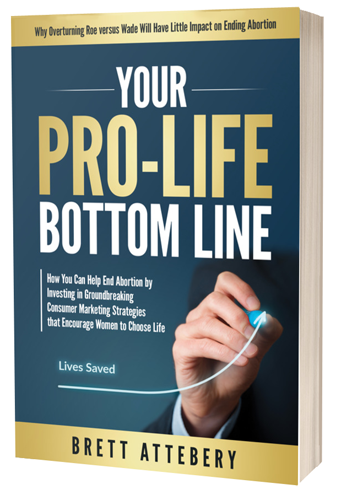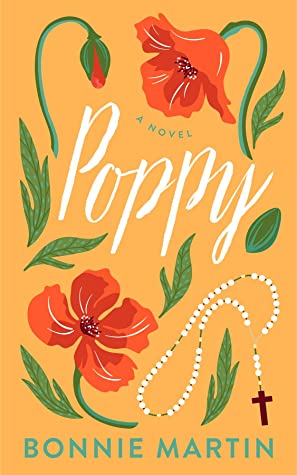
Image credit: https://tmgaouette.com/books/for-edens-sake/.
Unlike cheesy and ultra-pious “Christian” fiction, Gaouette’s novel depicts a young couple who, in a drunken stupor, banged each other in a one-night stand and whose resulting abortion decision is handled realistically.
I feared that this novel would be yet another “religious” work fictionalizing abortion with lots of “come to Jesus” moments and citations and transcriptions of Scripture galore.
Buzzer! The author must have read Dana Gioia’s The Catholic Writer Today and Other Essays (Wiseblood Books, 2019), wherein he writes that “Catholic literature is rarely pious. [….] Catholic writing tends to be comic, rowdy, rude, and even violent” (20). Whether the book is as naughty as the opening paragraph of this review, I leave to the reader; “Having just left her asleep in the crumpled bed I’d risen from” (4) is perhaps the naughtiest line in the entire work, and that ain’t saying much.
But, since this is not a college English class lecture and a book review meant for social media and not scholars (whom no one reads anyway), I digress…
Gaouette’s ability to render her characters realistically could lead the reader to miss some important polarities and deeper philosophical ideas which practitioners of old-fashioned literary criticism used in colleges and universities before the woke nonsense replaced solid literature analysis with Democratic Party political activism, such as pro-abortion agitprop and anti-Semitism.
For example, archetypal literary critics could spend some time examining why the main characters are named Isaac Prince (twenty-two years old) and Rebecca Stratham (nineteen) and why their child is named Eden, especially since the novel does not explain the religious significance. (Remember: it isn’t a preachy religious tract.)
A deconstructionist literary critic might discuss the evident “polarities” represented by the characters to somehow “undermine” or “destabilize” the “meaning” of the “text” (such buzzwords to say that a decon critic wants to destroy what an author tries to communicate!).
For example, Isaac obviously lives his religious upbringing—he is not ashamed to confess his sin of fornication in the Sacrament of Reconciliation early in the novel (10ff)—while Rebecca seems to be bereft of any type of religious training. Isaac comes from a functioning two-parent heterosexual family, while Rebecca’s family dynamics are unknown, the exception being a materialistic and emotionally cold father.
Even the friends of these two main characters function as polarities. While rural boy Isaac relies on his childhood buddy and brother-in-faith Kevin to help him navigate the responsibilities of adulthood in the big city, Rebecca’s pal is the so-called pro-“choice” (that is, abortion-loving) and aggressive Tess. That Tess’ abortion is disclosed only towards the end of the novel accounts somewhat for her intolerance of pro-life ideas and persons (hence her disgust and hatred of Isaac, whom she derides for his “patriarchal” care for both Rebecca and the unborn child), but she remains a flat and (worse) an unlikeable character.
A feminist literary critic could explore the evident patriarchal oppression of women and other now ridiculously outdated tenets of traditional political feminism by determining if Isaac is indeed oppressing Rebecca with the power of his phallus or otherwise dominating her with his heteropatriarchy or similar nonsense that most students merely laugh at behind their Women’s Studies professors’ backs.
A gay and lesbian literary critic might have some material to work with to justify a weird and utterly false interpretation of the novel. Hmmm…Isaac and his best buddy Kevin share an apartment together? Fishy. They were boyhood “friends”? Doubly fishy. Similarly, Rebecca and her friend Tess also share an apartment? Triply fishy. Tess is more a domineering (over Rebecca) masculine type while Rebecca is ever so girly? Quadruply fishy! However, beyond these preliminary salacious suggestions, a gay and lesbian critic would be as effective in analyzing the novel as a deconstructionist critic would provide help to rabbinical scholars explicating the Babylonian Talmud to understand what God meant by the lex talionis.
Sidebar here, touching on masculinist literary criticism, designed for heterosexual men. Chapter 11 (127ff) wherein Isaac and Kevin go shopping in a store for baby items is wonderful comic relief. What likeable dumbasses!
A Marxist literary critic would revel in the clash of ideologies represented by the polarities of the life-affirming Isaac and the stridently anti-life so-called “feminist” Tess (“feminist” in quotation marks, since a genuine feminist would support the life of the unborn child and reject abortion, as the nineteenth century founders of the American feminist movement advocated). Also, since Marxist literary criticism delves into financial aspects of literature, examining the power of money and other transactions that Isaac presents to Rebecca in order to save the child from being killed in abortion would constitute a wonderful literary analysis paper…for a pro-life English professor, that is.
Fortunately, students of literature and the general reading public can reject the above tired literary theories and realize the worth of Gaouette’s novel through the perspective of right-to-life literary criticism, for which I formulated five questions.
1. Does the literary work support the perspective that human life is, in the philosophical sense, a good, some “thing” which is priceless?
Gaouette’s work illustrates the pricelessness of human life admirably and, in contrast to pro-abortion novels which read more as ideological essays than fiction, does so without hearkening to pro-life responses to anti-life diatribes against the first civil right to life. The appreciation of human life as a good in itself is particularly manifested by Rebecca, who achieves a life-affirming position in a calculus of actions to be explored further below.
2. Does the literary work respect the individual as a being with inherent rights, the paramount one being the right to life?
A surface reading of Gaouette’s novel would not answer this question affirmatively since it is not preachy. The reader can, however, determine an answer by examining the reactions of those who devalue human life or aspects of our humanity which everybody should support. Here, again, Tess is the obvious catalyst to help readers understand how an anti-life philosophy manifests itself; furthermore, by contrast, the reader can appreciate the human lives whom she degrades.
For example, Tess does not think highly of pro-lifers—a litotes if there ever was one! She reduces Isaac to “this moron” whose intent in trying to save the child from abortion is “all about taking away our reproductive rights” (34). The universe of pro-life persons she similarly reduces negatively as in the following falsity: “Typical pro-lifer. Cares only about the fetus when it’s inside the woman. Then they forget all about them when they’re born. They let them suffer then, don’t they?” (82).
3. If the literary work covers the actions of a family, does it do so respecting heterosexual normativity and the integrity of the family?
Sorry, not sorry, gay, lesbian, and transgender zealots who see the LGBTQ distortion of heterosexual normativity in every work of fiction. Gaouette’s work doesn’t cater to such a warped sense of human sexuality as most publishers demand of their authors to be politically correct. Isaac is a real man, “soft eyes, strong physique, and manly features” (105) whose sperm do their job on the first try. Rebecca is stereotypically feminine and womanly, not pink haired, studded with nose and tongue rings, wearing amorphous gender-free clothing, or willing to kill unborn human life.
Moreover, while Rebecca suffers from a broken family structure (her mother died when she was apparently a little girl “all those years ago” [32]), Isaac can rely on both of his parents to support him in his efforts to, first, save the life of the unborn child whom he created with Rebecca from abortion and, second, to raise their daughter on his own after her birth.
Further, Isaac’s parents’ reactions to his paternity are realistic and not preachy as some ideology-driven, albeit pro-life, fiction might render them. For example, the father’s reaction to the announcement that Isaac is a daddy—and (remember from the first paragraph of this review) became one by screwing a chick in a one-night stand in a drunken stupor—is utterly honest:
After what seemed like forever, he stood. “I’m going to bed,” he said. “And I think you should do the same.” He lifted the jug and shuffled to the fridge. After shutting the door, he turned to me. “We can talk in the morning.” He headed out of the room. (41)
Wouldn’t a father react with such speechlessness and tiredness if the son he thought was such a “good boy” seemed to fuck up his life?
4. Does the literary work comport with the view that unborn, newborn, and mature human life has an inherent right to exist?
The range of responses to this question moves from Isaac’s consistent support for the life of the unborn child despite the impact that caring for the child would have on his own life, Rebecca’s, or his parents’ lives to Tess’ equally consistent perception of the unborn child as, in the customary feminist distortion of life, a roadblock to Rebecca’s success or merely another opportunity for the exercise of male power over the life of yet another woman.
Most significantly, while her belief in the perspective that human life is a philosophical good, which has been hinted above, Rebecca’s affirming the life of the unborn child has been accomplished in a lengthy trajectory. The calculus of life-affirming steps moves from her being a character assertive in her right that “fortunately, for me, it’s my body, Isaac. You guys don’t get a choice” (22; italics in original), to someone who nonchalantly uses pro-abortion dehumanizing language to refer to the unborn child as when she calls her “the parasite that was growing within” (54), to one who becomes aware of the child’s humanity through ultrasound images, and eventually to one who provides a gift to the child after birth, knowing that Isaac has committed to raising their daughter himself (a gift given before the novel’s denouement, not to be spoiled here).
Thus, unlike the flat character Tess, Rebecca is eminently more of a round character than Isaac, having come to this heightened character status through acceptance of a series of life-affirming principles showing the “perspective that human life is, in the philosophical sense, a good, some ‘thing’ which is priceless”, which ineluctably leads Rebecca to accept “that unborn […] human life has an inherent right to exist”—an impossible task to accomplish in anti-life fiction.
Moreover, Isaac and Tess are not the only ones who hold firm positions on the value of unborn human life. Many other minor characters are worth studying, such as the nurse operating the ultrasound who comments approvingly on the unborn child’s development, especially the heartbeat, or Isaac’s parents, who are committed to assist Isaac and the child once she is born, or Isaac’s birth mother.
5. When they are faced with their mortality, do the characters come to a realization that there is a divine presence in the world which justifies a life-affirming perspective?
This last question of right-to-life literary theory cannot be answered definitively since the characters are still in their youth and their lives together as an integral family are not fulfilled chronologically. The reader can conjecture, however, that at least one of the characters, Isaac, maintains the religious principles of his parents especially when he exults in the preciousness of his daughter’s life vis-à-vis God’s creation:
“Eden,” I whispered. It just came to me and it was so fitting, because everything God created was perfect. And hearing me speak her name sent another wash through me, the emotion leading to a tightness in my throat. And I only managed to whisper, “It’s Daddy.” (163)
In contrast, although she seems to acknowledge a religious foundation for life, as evidenced by her purchasing an overtly Catholic religious necklace for her daughter, Rebecca’s acknowledgement of the divine presence in the world is superficial at best. After all, buying a religious item for someone else can hardly substantiate that the person him- or herself has recognized “a divine presence in the world which justifies a life-affirming perspective”; it may, at least, suggest her openness to such a philosophical foundation.
At 180 pages, Gaouette’s novel is a quick and enjoyable read. Since Amazon collaborates with cancel culture and woke zealots and bans conservative and pro-life books, buy this book directly from the publisher: https://tmgaouette.com/book-store/.



